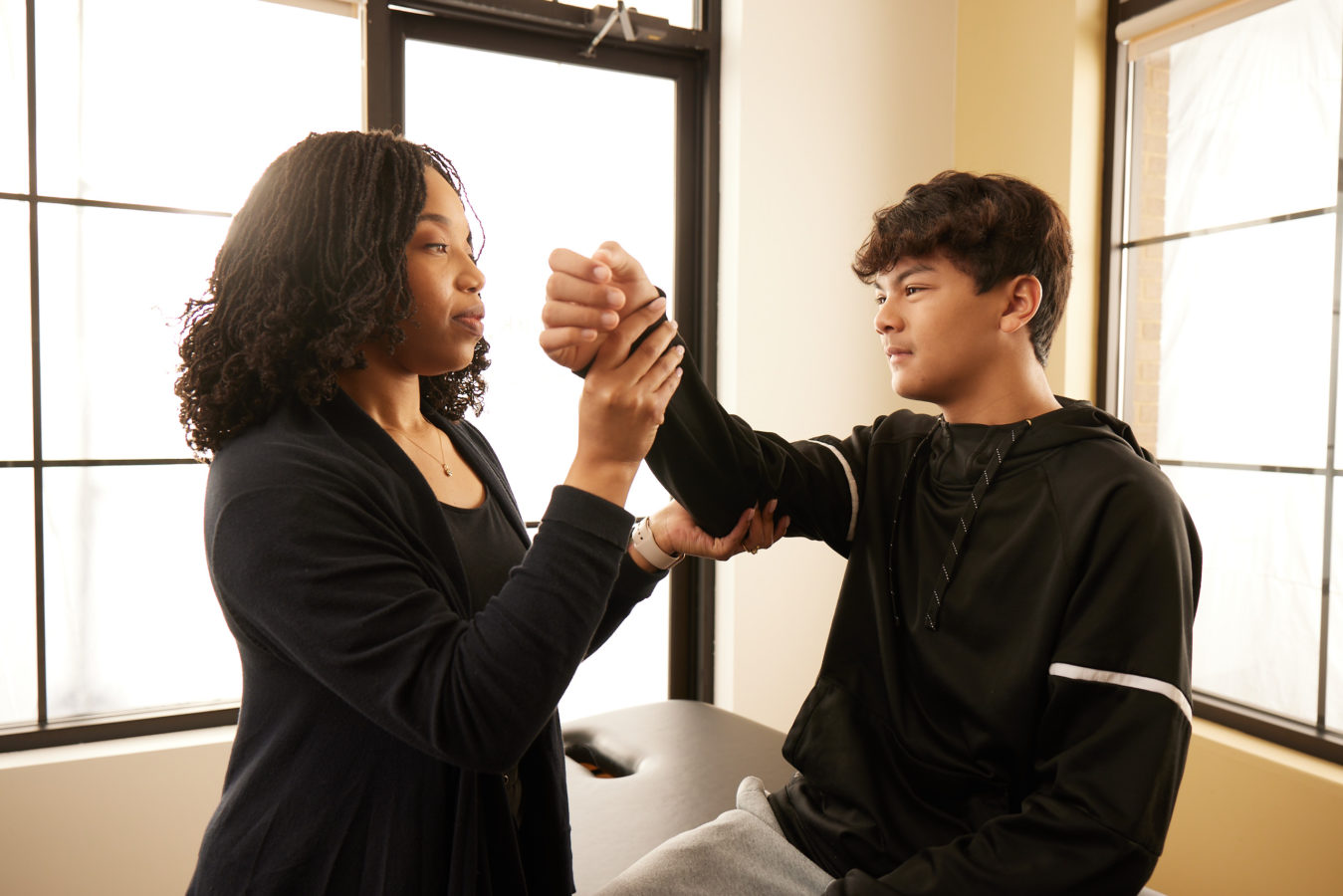
Adhesive capsulitis, commonly known as frozen shoulder, leads to pain, stiffness, limited mobility, and gradual loss of overall motion.
When the joint capsule and soft tissues surrounding the shoulder become inflamed, swollen, and contracted, bands of scar tissue form and restrict mobility. Daily or recreational activities become difficult because of the pain, stiffness, and reduced mobility.
Physical therapy for frozen shoulder can increase mobility and prevent loss of function for the entire upper extremity–which sometimes happens when a frozen shoulder goes untreated.


Frozen shoulder is treated in a range of ways, including:

*Services are not available at every location. Visit our Locations page for more details.